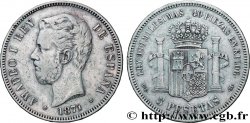Sie müssen angeschlossen sein und von cgb.fr genehmigt werden, um in einer E-Auktion teilzunehmen.Melden Sie sich an, um zu wetten..Die Kontobestätigungen sind innerhalb von 48 Stunden nach Ihrer Anmeldung gemacht.Warten Sie nicht bis die letzten zwei Tage vor dem Abschluss eines Verkaufs, um Ihre Registrierung abzuschließen. Klickend "BIETEN" verpflichten Sie sich vertraglich, diesen Artikel zu kaufen und Sie nehmen ohne Reserve die allgemeinen Verkaufsbedingungen für den e-auctions zu cgb.fr an.
Der Verkauf wird an der Zeit auf der Übersichtsseite angezeigt geschlossen werden. Angebote, die nach der Schließung Zeit empfangen sind, werden nicht gültig.
Bitte beachten Sie, dass die Fristen für die Einreichung Ihres Angebots auf unsere Server können variieren und es kann zur Ablehnung Ihres Angebots entstehen, wenn es in den letzten Sekunden des Verkaufs gesendet wird. Die Angebote sollen mit ganzer Zahl ausgeführt sein, Sie können Kommas oder des Punktes in Ihrem Angebot nicht erfassen. Bei Fragen klicken Sie hier, um einen Blick auf die FAQ E-Auktionen.
KEINE ANSCHAFFUNGSKOSTEN FÜR DIE KÄUFER.
KEINE ANSCHAFFUNGSKOSTEN FÜR DIE KÄUFER.
| Schätzung : | 180 € |
| Preis : | 71 € |
| Höchstgebot : | 120 € |
| Verkaufsende : | 22 Januar 2018 19:06:00 |
| Bieter : | 9 Bieter |
Type : Médaille, concours hippique
Datum: 1862
Name der Münzstätte / Stadt : 62 - Arras
Metall : Kupfer
Durchmesser : 41,5 mm
Stempelstellung : 12 h.
Graveur CAQUÉ
Gewicht : 36 g.
Rand lisse + abeille CUIVRE
Kommentare zum Erhaltungszustand:
Superbe médaille avec d’infimes traces de manipulation
Vorderseite
Titulatur der Vorderseite NAPOLÉON III - EMPEREUR.
Beschreibung Vorderseite Tête laurée de Napoléon III à gauche.
Rückseite
Titulatur der Rückseite MINISTÈRE D’ÉTAT - DIRECTION GÉNÉRALE DES HARAS // CONCOURS RÉGIONALE HIPPIQUE D’ARRAS / 1862.
Beschreibung Rückseite Légendes circulaires dans et autour une couronne végétale.
Kommentare
L'institutionnalisation de l'élevage équin a, même avant la création des haras nationaux, été un enjeu important en raison de ses répercussions militaires.
En 1717, la structure administrative est précisée et renforcée. Le surcroît de pouvoir donné aux garde-étalons entraîne des abus et une généralisation de la corruption qui rend l'institution impopulaire au point que, lors de la Révolution française la Constituante supprime purement et simplement les haras nationaux en 1790. Le grand écuyer du roi est l'un des premiers à fuir lors de la Révolution.
Ils sont rétablis en 1806 par Napoléon, mettant les haras sous la tutelle du ministère de l'intérieur.
.
The institutionalization of horse breeding, even before the creation of the national stud farms, was an important issue due to its military repercussions. In 1717, the administrative structure was clarified and strengthened. The increased power given to the stallion keepers led to abuses and widespread corruption, which made the institution unpopular to the point that, during the French Revolution, the Constituent Assembly simply abolished the national stud farms in 1790. The King's Grand Equerry was one of the first to flee during the Revolution. They were reestablished in 1806 by Napoleon, placing the stud farms under the supervision of the Ministry of the Interior.
En 1717, la structure administrative est précisée et renforcée. Le surcroît de pouvoir donné aux garde-étalons entraîne des abus et une généralisation de la corruption qui rend l'institution impopulaire au point que, lors de la Révolution française la Constituante supprime purement et simplement les haras nationaux en 1790. Le grand écuyer du roi est l'un des premiers à fuir lors de la Révolution.
Ils sont rétablis en 1806 par Napoléon, mettant les haras sous la tutelle du ministère de l'intérieur.
.
The institutionalization of horse breeding, even before the creation of the national stud farms, was an important issue due to its military repercussions. In 1717, the administrative structure was clarified and strengthened. The increased power given to the stallion keepers led to abuses and widespread corruption, which made the institution unpopular to the point that, during the French Revolution, the Constituent Assembly simply abolished the national stud farms in 1790. The King's Grand Equerry was one of the first to flee during the Revolution. They were reestablished in 1806 by Napoleon, placing the stud farms under the supervision of the Ministry of the Interior.








 Berichten über einen Fehler
Berichten über einen Fehler Die Seite drucken
Die Seite drucken Teilen meiner Auswahl
Teilen meiner Auswahl Stellen Sie eine Frage
Stellen Sie eine Frage Einlieferung/Verkauf
Einlieferung/Verkauf
 Details
Details















